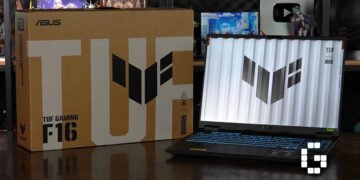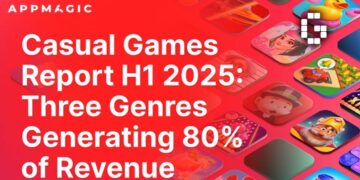This article on ‘The Evolution of Internet in Malaysia and Its Impact on Gaming ’ was available earlier as part of the GamerBraves Newsletter. Sign up for free to gain access to more articles about news and trends in the gaming industry and community.
The internet has become an integral part of our daily lives, and the technology has seen significant growth since its inception in Malaysia and around the world. It has become a backbone of today’s world, a necessity that affects our day-to-day tasks, such as acquiring information, work, communication, gaming, and other forms of entertainment.
Today’s internet speed and online media are unlike what it was two decades ago, and it takes steps in technological advancement to evolve the technology into what it is now. This includes mobile data, which recently made a huge leap in advancement with the introduction of 5G.

Now, walking down the city streets or commuting in Malaysia, it is not uncommon to see people holding onto their phones and engaging in online activities whether be social media or gaming.
There has also been an upsurge of Malaysian gamers who primarily game on mobile devices in recent years, especially when it comes to online titles such as Mobile Legends: Bang Bang, PUBG Mobile, and Genshin Impact, among other games.
The Beginning of Online Gaming
The beginning of the internet age in Malaysia could be considered to have started around the late 1990s and early 2000s. The rapid availability of the internet around this time also led to a rise in online games, especially MMORPGs such as World of Warcraft and EverQuest gaining massive popularity in the West.
Of course, Malaysians did catch on to the rising popularity of MMORPGs with titles such as MapleStory and Ragnarok Online. As download speeds were not fast in the early days of the internet, MMORPG publishers in Malaysia would send out discs to players to ease the game installation process.
However, the subscription service model for some MMORPGs can be expensive due to currency differences, so Malaysians tend to gravitate towards free-to-play or titles that only require them to pay once. This likely factored into the birth of competitive gaming and esports culture in Malaysia with games like Defense of the Ancient (DotA), Counter-Strike, and Sudden Attack becoming popular.

During this early age of the internet, non-MMORPG titles generally utilize a networking architecture known as peer-to-peer (P2P). In its simplest definition, this network connects two or more PCs together to share resources without having to go through a server. In other words, the connection stability depends on the players currently in the online lobby, especially the one hosting the session.
I remember the days when I played DotA in the Warcraft III client with my friends. Not only did we need to rely on third-party software in the form of Garena to connect to one another, but there were often disconnections or stutters. However, nobody blamed the server back then but pointed fingers at one another, such is the nature of the P2P connection, when one person lags others follow.
Back then, connectivity was also heavily affected by landlines and a single phone call could greatly slow down the internet speed. In the early 2000s, the internet could also be considered a luxury as many areas lacked access.
Fiber Optics
This was not until the Malaysian government put in place the National Broadband Initiative in 2007 to bring broadband to the whole nation. In 2010, Telekom Malaysia introduced high-speed broadband services with fiber optics to the nation under the brand Unifi.
Since then, telecommunication companies have been improving internet quality in the country. As of this year, Malaysia ranked 37th out of 121 countries in overall internet quality, 38% higher than the global average according to a report by The Edge Malaysia and Surfshark.

While many games still use the previously mentioned P2P network architecture, connection instability, and disconnections are no longer as prominent. Now, I could even play with my friends from a faraway country like Australia in Malaysia with stable connectivity and minimal disconnection.
Rise of Mobile Internet
The world of mobile internet has also seen great technological advancement throughout the years. There was a time when phones were only meant to make calls, but now smartphones have become essential to us in our current lifestyle. The use of cellular internet is now unavoidable as we rely on them for many important aspects of life, from communications to payment and finance management through applications like Touch ‘n Go eWallet.
In a blog post by Tenaga National subsidiary allo!, it was estimated that a minimum of 60% of Malaysians’ internet usage was through mobile devices in 2021, and more than two-thirds of Malaysians are connected through their smartphones nowadays.
Before smartphones, most mobile phones were only capable of basic media functions such as opening images and playing music, so there was not much need for high-speed internet. 3G was introduced to the world but its ability is limited to mostly HTML pages at the time.

Fast forward, the rise of Malaysians’ reliance on mobile internet could likely be traced back to around 2013 when 4G networks were first introduced in the country by Maxis Communications. This was also around the same time when smartphones began to grow in popularity.
The launch of 4G LTE had quite an impact on the mobile network landscape, significantly increased data speeds, and reduced latency. This was also the cellular network standard for the past decade until 5G was introduced to Malaysia just last year.
Mobile Gaming
With both cellular data and smartphones improving each year, mobile games began to rise in popularity with a variety of genres available to download, introducing gaming to people who otherwise did not own any consoles or capable PCs.
One aspect of mobile games is that they are rather accessible because a lot of them are freemium titles, meaning they are free to download and play with some optional microtransactions on the side. The portability of smartphones and internet connections often available through mobile data, means many gamers can play online titles while commuting or hanging out with friends.
The MOBA genre is already pretty popular here in Malaysia because of Dota 2 and League of Legends. So, a mobile version to play on the go immediately becomes appealing to many fans. Based on data from the mobile app analyst website AppMagic, Malaysia contributed 13% of all revenue for Mobile Legends: Bang Bang, ranking just behind Indonesia.

Meanwhile, HoYoverse’s games such as Genshin Impact and Honkai Star Rail have garnered a huge following in Malaysia as themed onsite events like HoYo FEST are often packed with fans.
Of course, with the introduction of 5G in Malaysia, the mobile internet landscape may see a significant change in the next few years, especially on the side of gaming. This is especially true since 5G is said to offer a low latency of 5 milliseconds on average, while 4G latency can range from 60 ms to 98 ms.
Mobile Data vs. Wi-Fi
According to The Edge Malaysia, mobile internet speed in Malaysia has increased by 142% since last year, and fixed broadband speed has advanced by 19%. While Malaysia’s internet performance is still slower than that of Singapore, it is still a noticeable significant improvement.
Nowadays, cellular data performance could be comparable to Wi-Fi or Ethernet connection, offering a good speed to stream videos and play games. There are of course differences in what any of the internet types can or cannot do.

Despite the mobile internet being as powerful as ever, it is held back by data limits, prompting users to seek Wi-Fi to download large-size files, especially game updates. Meanwhile, setting up home internet can be an expensive commodity with certain cable installation types costing more outside of the internet service itself.
For example, internal wiring may require house renovation to expose inner walls for the cable to go through, or underground cabling requires a long pending approval from the government. Some internet providers may also not be available in certain areas or only choose to service specific customer types due to business reasons. For example, TIME prefers to service high-rise buildings and enterprises over landed properties as there are many added costs to pull cables for a large area.
In contrast, mobile internet only requires users to subscribe to a data plan with their phone number and the network would almost immediately be available as long as there is mobile coverage in the area. In other words, both internet types have their pros and cons depending on the users’ needs.
Internet Growth Impact on Gaming
We are now in the digital age and we rely on the internet for many daily activities, including work, education, and leisure. The improvements that the internet gets every year indeed had a profound impact on the daily lives of people, especially in the realms of gaming.
No longer are landline phones slowing down connections drastically or cellular data only able to run HTML webpages. Games are connected faster than ever and while there is still much improvement to have, Malaysia’s internet speed has been growing each year.

Many people’s gaming habit has also changed, with some moving on to game frequently on both PC and their smartphones. While many of the more hardcore gamers still stick with PC and console online titles, there is undoubtedly a significant rise in mobile gamers in Malaysia.
The most likely factor is that smartphones are devices that almost everyone has due to their necessity in life. Now that 5G has been launched in the country, the newly improved cellular networks would likely attract more people to try out online gaming through their phones.
This is just a glimpse of how the internet has grown throughout the years and impacted how people in Malaysia engage with gaming. As the internet infrastructure in Malaysia improves, whether Wi-Fi or cellular data, we might see the number of gamers rise in the country, especially with gaming becoming more widely accepted.













![[EXCLUSIVE] Creative Masterminds from Gearbox Software Reveal What Makes Borderlands 4 Worth the Wait](https://cdn.gamerbraves.com/2025/07/Borderlands-4-at-Bilibili-World-2025_Interview_FI-360x180.jpg)




![[ASIA EXCLUSIVE] Bringing Back a Classic: Inside the Making of FINAL FANTASY TACTICS – The Ivalice Chronicles](https://cdn.gamerbraves.com/2025/06/FFT-Ivalice-Chronicles_Interview_FI2-360x180.jpg)



![[EXCLUSIVE] Honor of Kings Goes Global: Interview with James Yang on International Esports Expansion](https://cdn.gamerbraves.com/2025/08/James-Yang-Exclusive_Interview_FI-350x250.jpg)





